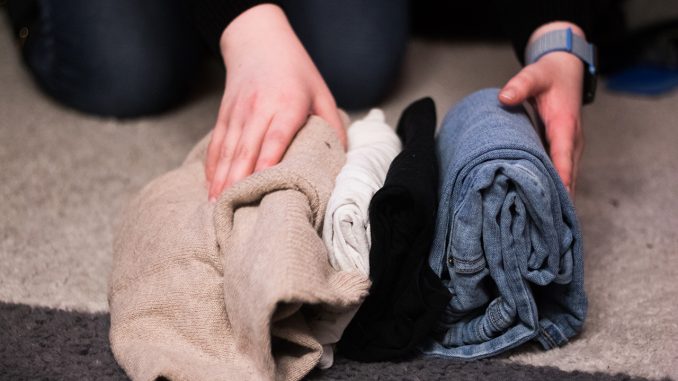
Fiona Sanderson didn’t understand why she was so attached to the clothes she no longer wore.
“My biggest fear was that if I gave something away, of course, the next day I’d want to wear it or I’ll run into an occasion where I would need to wear it,” said Sanderson, a freshman nursing major.
Sanderson’s mom and therapist recommended Sanderson try the KonMari Method to reflect on whether she needed the items she owned.
Coined by Japanese tidying expert and author Marie Kondo, the KonMari Method helps people organize their possessions in five areas: clothes, books, papers, miscellaneous items — or “komono” in Japanese — and sentimental items.
Temple University students who struggle with tidying up or want to live a more minimalist lifestyle are using Kondo’s method to organize their clothes and possessions.
“I had so many things, and I didn’t know what was important to me,” Sanderson said. “Once I started, I realized the clothes I was giving away didn’t give me much purpose and they could give someone else purpose.”
The KonMari Method helped Sanderson refine her style and keep a more minimalist closet, she said. Now she’s happy with the clothes she has and doesn’t feel the need to buy more.
Kondo’s New York Times best-selling book, “The Life-Changing Magic of Tidying Up: The Japanese Art of Decluttering and Organizing,” released in the United States in 2014, inspired her Netflix original show “Tidying Up with Marie Kondo.” The show, which aired in January, features Kondo teaching individuals, couples and families the KonMari Method and six basic rules of tidying.
Kondo’s final rule is holding each item and asking, “Does it spark joy?” If it doesn’t, people are encouraged to thank the clothing and let it go. The items people keep should be thanked as well.
“Marie’s method helped me understand what my clothes do for me and how I enjoy them and the purpose they serve me and what I get out of them,” Sanderson said.
Kondo promotes tidying up by category instead of room-by-room, which can result in picking away at piles of stuff forever, and once you do it correctly once, you’ll never have to do it again, according to Kondo’s website.
Sophomore business management major Christina Sayoc struggled with staying organized because she loved collecting items and keeping them for years, she said. Once she found out about the KonMari Method, her perspective on her belongings changed.
“To go through things one by one and actually look at the article of clothing that I know doesn’t spark joy for me and to actually give it away and give it a new home was really rewarding,” Sayoc said.
Since the show’s debut, second-hand stores like Circle Thrift on Frankford Avenue near Dauphin Street in Kensington have received more donations from people who’ve used the KonMari Method.
While the spike in donations is sometimes overwhelming, Jess Shoffner, the manager at Circle Thrift, said it allows people from different socioeconomic backgrounds to buy affordable items.
“Spreading the wealth is always a good thing to do if you have too many things,” Shoffner added. “It’s awesome to pass them along because there are folks who don’t have too many things or who legitimately need specific items.”
The KonMari Method is great for those who want to declutter and get a new hold on life, and the donations give other shoppers more options, said Christina Kallas-Saritsoglou, the co-founder and manager of Philly AIDS Thrift, a nonprofit business that donates its proceeds to organizations fighting HIV and AIDS.
“We wouldn’t exist without donations and so the fact that we are increasingly getting more, that’s fantastic for us,” Kallas-Saritsoglou said.
Henry Chen, a freshman film and media arts major, said Kondo’s method is helpful because it addresses beyond the physical aspect of decluttering.
“She tackles the psychological relevance that is undermined with clutter that others fail to bring up,” Chen said. “I have never thought of how to clean properly, and learning from her methods makes it easy to follow rather than other types of cleaning methods.”
Kondo’s folding method calls for every article of clothing to be laid upright to fit better in drawers, so people can see their whole wardrobes.
Sanderson believes the method was more helpful than just asking herself if she wore an item of clothing often or liked it, she said.
“Once I gave the clothes away, I realized I was so much happier,” she said. “It feels like a weight has been lifted and it has given me opportunities to further analyze what my clothes mean to me.”



Be the first to comment